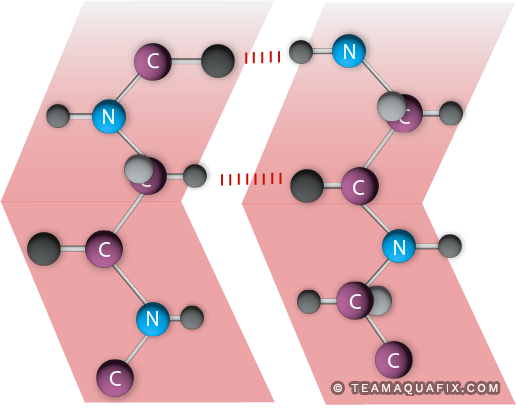Ana-Zyme P
Ana-Zyme P is a blend of concentrated enzymes engineered to degrade complex proteins present in anaerobic waste from industries such as meat packing, rendering, food processing, and farming. Protein-rich substrates contain high nitrogen content and are difficult for anaerobic digesters to process, often remaining undigested when other materials are fully broken down. Degrading complex proteins increases the efficiency of the methanogenesis pathway.
Specialized Protein Degradation: Quickly breaks down complex proteins found in meat packing, rendering, food processing, manure, and farming operations.
Unlocks Biogas Potential: Maximizes biogas production by efficiently breaking down protein-rich materials, which are hard for digesters to process.
Improves Digester Performance: Ensures that undigested protein substrates are fully broken down, optimizing overall digestion.
Rapid Hydrolysis: Speeds up the hydrolysis process, transforming complex proteins into easily digestible nutrients for methanogens.
Price range: $290.00 through $13,070.00
Specialized Protein Degradation:Quickly breaks down complex proteins found in meat packing, rendering, food processing, manure, and farming operations.
Unlocks Biogas Potential:Maximizes biogas production by efficiently breaking down protein-rich materials, which are hard for digesters to process.
Improves Digester Performance: Ensures that undigested protein substrates are fully broken down, optimizing overall digestion.
Rapid Hydrolysis: Speeds up the hydrolysis process, transforming complex proteins into easily digestible nutrients for methanogens.
| Anaerobic Digester or Anaerobic Lagoon | ||
|---|---|---|
| Initial Dose (Daily for 1 month) | Maintenance Dose (Daily after 1 month) | |
| 2.5 Gal per 500,000 Gal Digester Volume | .5 Gal per 100,000 Daily Inflow | |
Product Info
Enzymatic Protein Breakdown for Anaerobic Digesters
Ana-Zyme P is a high-performance enzyme blend formulated to break down complex proteins in anaerobic digesters and lagoons. Ideal for protein-rich waste streams from meat processing, rendering, and agricultural operations, Ana-Zyme P enhances digestion efficiency and biogas production by converting tough proteins into bioavailable compounds.
Protein-heavy substrates often linger undigested in anaerobic systems, leading to reduced gas output and overloaded digesters. Ana-Zyme P accelerates hydrolysis of these difficult compounds, reducing organic loading and helping operators get more energy from existing feedstock.
Its easy integration into feed pits or digesters makes Ana-Zyme P a valuable tool for improving system performance, minimizing sludge buildup, and optimizing methane generation. Whether you’re handling food waste or agricultural slurries, Ana-Zyme P delivers targeted enzymatic action where it’s needed most.
The Science Behind
Proteinaceous materials are among the most difficult substrates for anaerobic digesters to break down, due to their high nitrogen concentration. They often hinder anaerobic digester performance by passing through the process before they can be completely degraded. Ana-Zyme P bridges the gap between the considerable potential of anaerobic digesters and difficult proteins by breaking them down in a way that methanogens cannot. The rapid hydrolysis of these complex proteins into soluble amino acids creates food and an environment more favorable for methanogenic bacteria.
Aquafix laboratories partners with those who run or operate anaerobic digesters of any kind through technical consulting and biological methane potential testing. Feel free to reach out to us for technical assistance at any time.
 This diagram represents a small part of a protein molecule. Nitrogen (blue atoms) makes up about 16% of the mass of a protein. Generally, anaerobic feed shouldn’t be over 4% nitrogen. In addition, carbon (purple atoms) in proteins is difficult to access anaerobically, making it a poor carbon substrate.
This diagram represents a small part of a protein molecule. Nitrogen (blue atoms) makes up about 16% of the mass of a protein. Generally, anaerobic feed shouldn’t be over 4% nitrogen. In addition, carbon (purple atoms) in proteins is difficult to access anaerobically, making it a poor carbon substrate.
Ana-Zyme P improves anaerobic efficiency by outsourcing that extra metabolic step in the degradation of proteins so the anaerobic bacteria can focus their resources on breaking down carbon substrates and producing methane. This leads to improved methane generation, lowers effluent COD, and improved volatile solids destruction.
Product Pairings
For high COD use Ana-Zyme G.
Use BioGas1 for trace metal deficiency.

